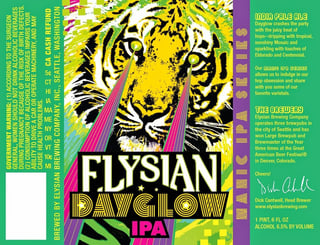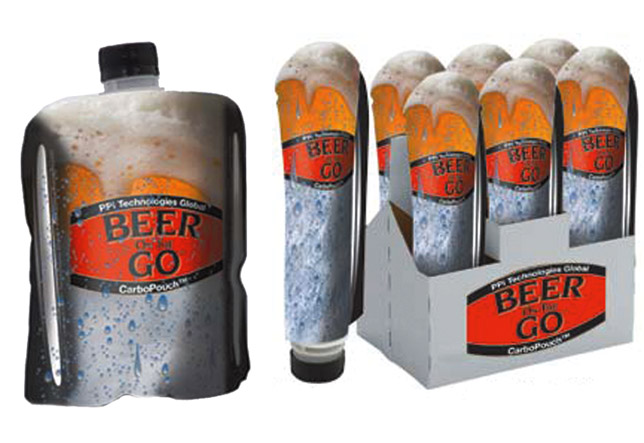In Ohio, the beverage industry – particularly alcohol – is undergoing some exciting changes. After years of failed proposals, the alcohol percentage cap has been lifted, offering expanded opportunities for craft brewers to develop and distribute unique flavors and complex concoctions.
Without the restrictions of an ABV limit, beer masters are further able to hone their craft and share exciting, full-bodied, aromatic beverages to adult consumers. Microbreweries are cropping up, not just in our home state, but around the country as consumer demand for flavorful, delicious beer soars. New opportunities involved in the beer world point to forward-thinking possibilities involving the design, beverage packaging, distribution, and availability of these exciting craft brews.
According to data compiled from the Can Manufacturers Institute, a larger number of brewers large and small are switching away from traditional amber glass bottles in favor of cans — lightweight, more durable containers that are cheaper to ship, easier to carry, and keep the carbonation and flavor presumably crisper. Research has found that consumers tend to think beverages packaged in cans are colder and more refreshing, and they give the drink inside a different aroma. Sound, too, is a huge factor in the shifting preference toward cans, as drinkers associate the signature “crack” of pulling the tab an exciting experience. This auditory signal keeps people coming back to the beverage, as they not only pair it with the taste and thirst-quenching properties of the carbonated drink, it also reminds them of the enjoyable event in which they opened it (tailgating, a party, a concert, a relaxing after-work treat, etc.).
This research emphasizes the relationship the five senses have with consumers’ changing preferences toward beverage packaging. Brands are looking for ways to accentuate the entire experience associated with holding, opening, drinking, and relishing in their beverages. Craft beer brewers value taste protection and performance, and the container their beverage is packaged in is crucial to preserving the flavor, crispness, and freshness of the drink inside.

While brewers large and small are shifting to cans, we’re beginning to see an even more dramatic shift in beverage packaging: alcohol pouches. These flexible liquid and spouted pouches have been used for decades as a way to easily store and dispense wine on the go (think of the spouted plastic pouch inside a box of Franzia), and both drink mixers and liquor brands are embracing flexible packaging for their flavorful alcoholic concoctions. Beer companies may be slow to embrace alcohol pouches for fear that it doesn’t offer the full sensory experience as cans, and consumers may be hesitant to try beer in a pouch for fear that the flavor or carbonation will be off.
However, flexible alcohol pouches offer numerous benefits that help launch brewers into a new era of beer marketing, packaging, and distribution.
The way current packaging is filled is often based on consumer preference. For the most part, cans come in one standard size, making innovative options a little trickier for beer companies. Sure, there’s the aluminum bottles made popular by big beer corporations like Molson Coors and Anheuser-Busch, but as consumer preference sways more in favor of inventive, forward-thinking microbreweries, smaller craft beer brands need to find the next big thing that will both preserve their beer and make it stand out and appeal to drinkers who care about the details both in the brewing of the beverage and in the way it looks and feels in the packaging.
Alcohol pouches are flexible, so they can be filed with beer all the way to the top of the package while the durable side layers expand outward, whereas traditional containers (like cans or glass bottles) only hold as much liquid as will fit into the size and shape of a rigid cylindrical package. Consumers also worry about the packaging itself altering the flavor of their beer and the way it pours, and while cans certainly have characteristics people like, many can’t get past the perceived metallic taste associated with an aluminum package. Pouches, on the other hand, are made with internal food-grade layers of laminated film that preserve the flavor and aroma of the beer without altering its structure or the way it tastes.
While some beer brands are still slow to shift to lightweight containers, we understand why: Glass bottles have been used to define imported and premium beer, as their heft and rigidity used to create associations in people’s mind that the beverage was somehow higher quality because it was packaged in a heavy container. However, that mindset has shifted, especially since cheap domestic beer is often packaged in amber bottles. The beauty of a flexible pouch is that it can be custom cut, sized, and printed to mimic the shape of a traditional bottle or can while offering something special and unique. Brewers appreciate the 360-degree real estate cans offer them (as opposed to small labels on glass bottles), but pouches offer flat “faces” on the front and back, not to mention a bottom gusset, that can all house distinct designs, graphics, logos, and text that set one brewery apart from the rest. Glass bottles also break easily, whereas lightweight drink packaging is much more durable in this regard.
According to the Can Manufacturers Institute, many beer drinkers prefer cans because they are not ostentatious, they can be taken on “adventures” more easily than glass bottles, and they are associated with relaxation, creativity, and uniqueness. Custom printed flexible pouches, on the other hand, are not limited by a traditional cylindrical shape, and they take up much less space in a cooler, backpack, fridge, or car than aluminum cans. Their impact on the environment is also much less damaging, as they can be flattened and recycled after the liquid is consumed, whereas cans must be crushed and still often take up a ton of space in trash cans or recycling bins.
We feel that beer pouches could be next for a different category of brewers, as growing consumer interest in complex flavors require packaging that preserves the quality of the beer while remaining conducive to drinkers’ diverse and changing lifestyles.
Opaque pouches protect beer against light and oxygen, which can significantly alter flavor, temperature, and freshness of the product. This is especially important for emerging brew masters who put much time, care, and attention to detail into creating complex and interesting colors and blends during the brewing process.
We’ve already seen how wine performs in bottles, cans, and flexible pouches, and it’s time for the beer industry to get on board with this inventive way of packaging their alcoholic beverages. With new opportunities available for craft beer brewers to create more flavorful, higher-percentage alcohol across the globe, becoming one of the first to adopt new beverage packaging styles can help launch smaller brands into the collective consciousness while setting new standards for the entire beer industry.
(Image Sources: Beer Advocate, Seattle Weekly)







